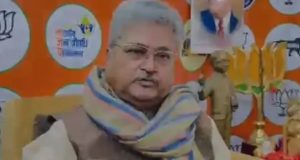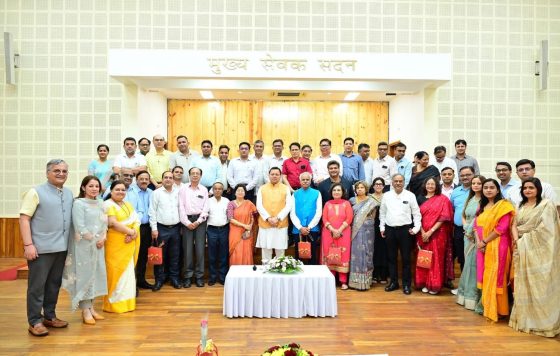DAINIK NATION BUREAU
Diabetes mellitus (DM) refers to a group of common metabolic disorders that share the hyperglycemia and accompanied by other biochemical disturbances. The presence of progressive diabetic tissue damage with micro and macro vascular complications. It is being presumed that 366 million people will be diabetic in 2030. In which 290 million will be living in developing countries.
The goals of therapy for Type-I or type-II DM are to (1) eliminate symptoms related to hyperglycemia, (II) reduce or eliminate the long-term microvascular and macro-vascular complications of DM and (3) allow the patient to achieve as normal a lifestyle as possible. Glycemic control is central to optimal diabetes therapy, comprehensive diabetes care of both type-I & and type-II DM should also detect and manage DM-specific complications and modify risk factors for DM-associated diseases.
The diabetic patient should know about nutrition, exercise, care of diabetes during illness, and medications to lower the plasma glucose. It is important for optimal diabetes care include self-monitoring of blood glucose; urine ketone monitoring; insulin administration; guidelines for diabetes management during illnesses; prevention and management of hypoglycemia.
Medical nutrition therapy (MNT) is a term used to describe the optimal coordination of caloric intake with other aspects of diabetes therapy (insulin, exercise, weight loss). Primary prevention measures of MNT are directed at preventing or delaying the onset of type 2 DM in high-risk individuals (obese or with prediabetes) by promoting weight reduction. Secondary prevention measures of MNT are directed at preventing or delaying diabetes-related complications in diabetic individuals by improving glycemic control. Tertiary prevention measures of MNT are directed at managing diabetes-related complications (cardiovascular disease, nephropathy) in diabetic individuals.
The glycemic index is an estimate of the postprandial rise in the blood glucose when a certain amount of that food is consumed. Consumption of foods with a low glycemic index appears to reduce postprandial glucose excursions and improve
glycemic control. Reduced-calorie and nonnutritive sweeteners are useful. Currently, evidence does not support supplementation of the diet with vitamins, antioxidants (vitamin C and E), or micronutrients (chromium) in patients with diabetes.
MNT is to minimize the weight gain often associated with intensive diabetes management. In Type-II it should focus on weight loss and address the prevalence of cardiovascular risk factors (hypertension dyslipidemia, obesity) and disease.
Hypocaloric diets and modest weight loss (5-7%) often result in rapid and dramatic glucose lowering in individuals with new-onset type 2 DM. Increased consumption of soluble, dietary fiber may improve glycemic control in individuals with type 2 DM. Weight loss and exercise improve insulin resistance. Exercise has multiple positive benefits including cardiovascular risk reduction, reduced blood pressure, maintenance of muscle mass, reduction in body fat, and weight loss.
Exercise is also useful for lowering plasma glucose (during and following exercise) and increasing insulin sensitivity. In patients with diabetes, the ADA recommends 150 min/week (distributed over at least 3 days) of moderate aerobic physical activity with no gaps longer than 2 days. Skeletal muscle is a major site for metabolic fuel consumption in the resting state and the increased muscle activity during vigorous, aerobic exercise greatly increases fuel requirements. To avoid exercise-related hyper- or hypoglycemia, individuals with type 1 should monitor blood glucose before, during and after exercise; and delay exercise if blood glucose is >250 mg/dL and ketones are present; and if the blood glucose is 100 mg/dL ingest carbohydrate before exercising; monitor glucose during exercise and ingest carbohydrate to prevent hypoglycemia; decrease insulin doses (based on previous experience) before exercise and inject insulin into a non exercising area; and learn individual glucose responses to different types of exercise and increase food intake for up to 24 h after exercise, depending on intensity and duration of exercise. In individuals with type2 DM, exercise related hypoglycemia is less common but can occur in individuals taking either insulin or oral hypoglycemic.
Dr S K Varun
senior Consultant physician and diabetologist
department of internal medicine
Synergy Institute of Medical Sciences Dehradun UK.
 Dainik Nation News Portal
Dainik Nation News Portal




